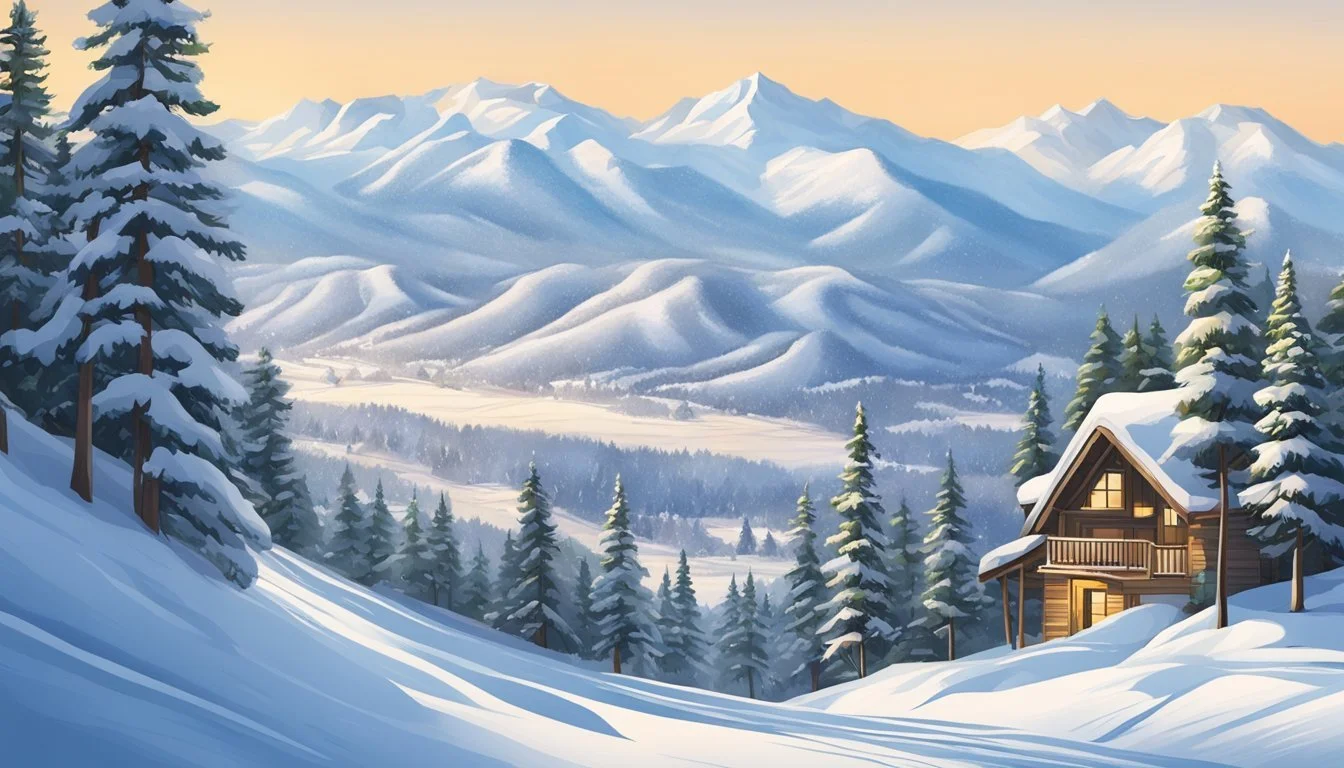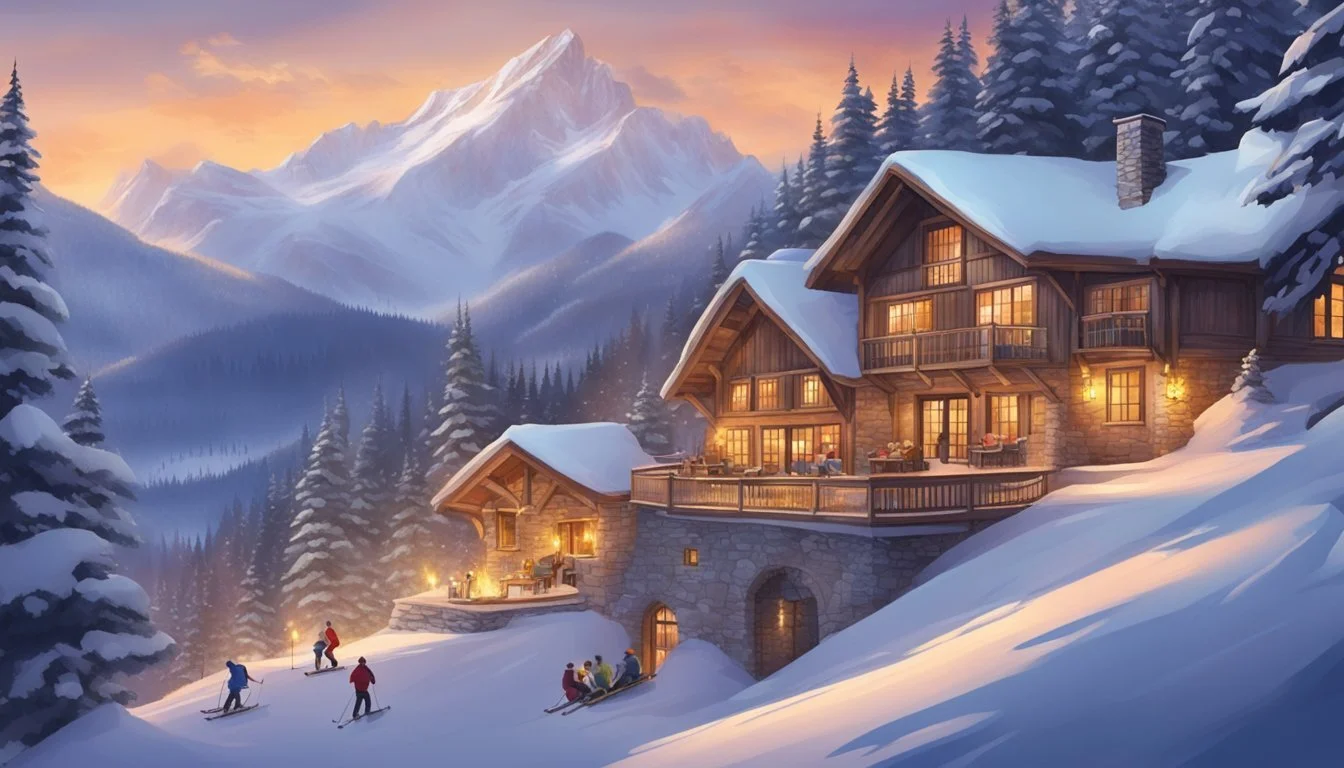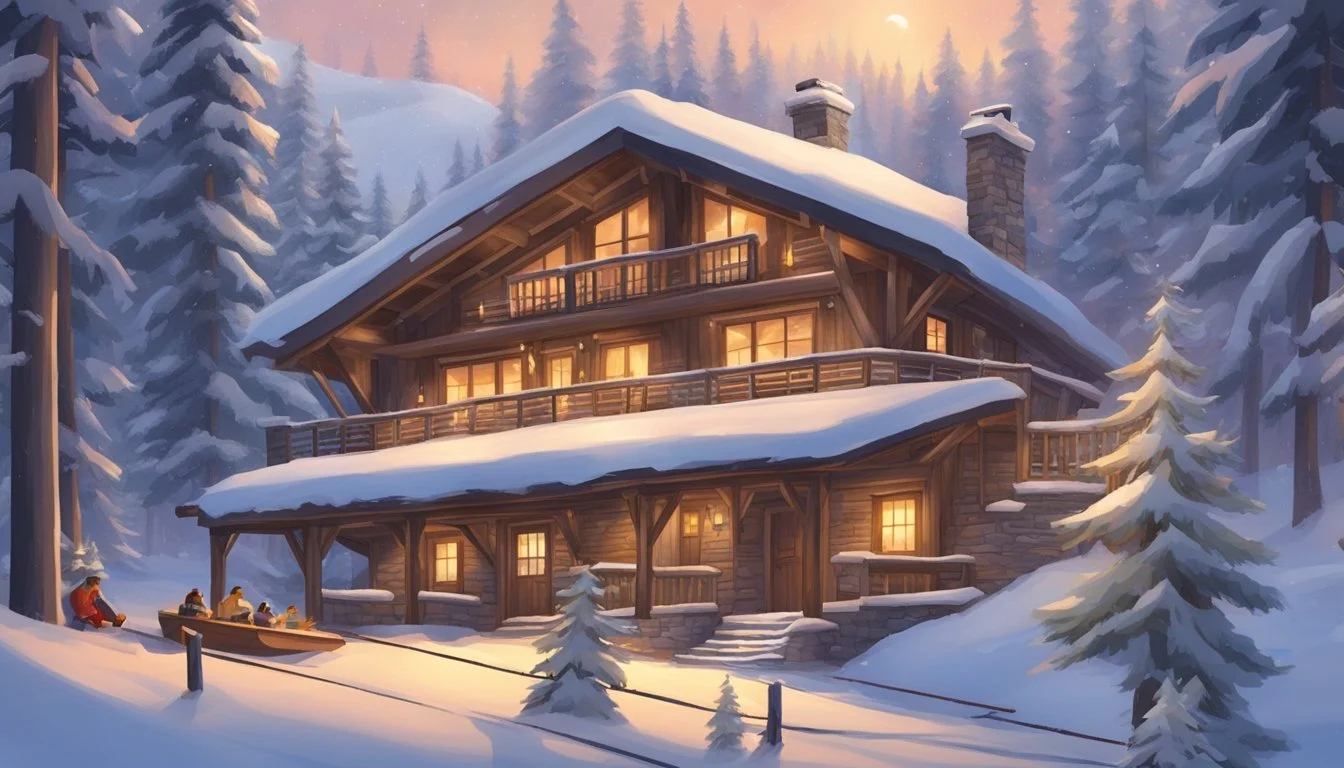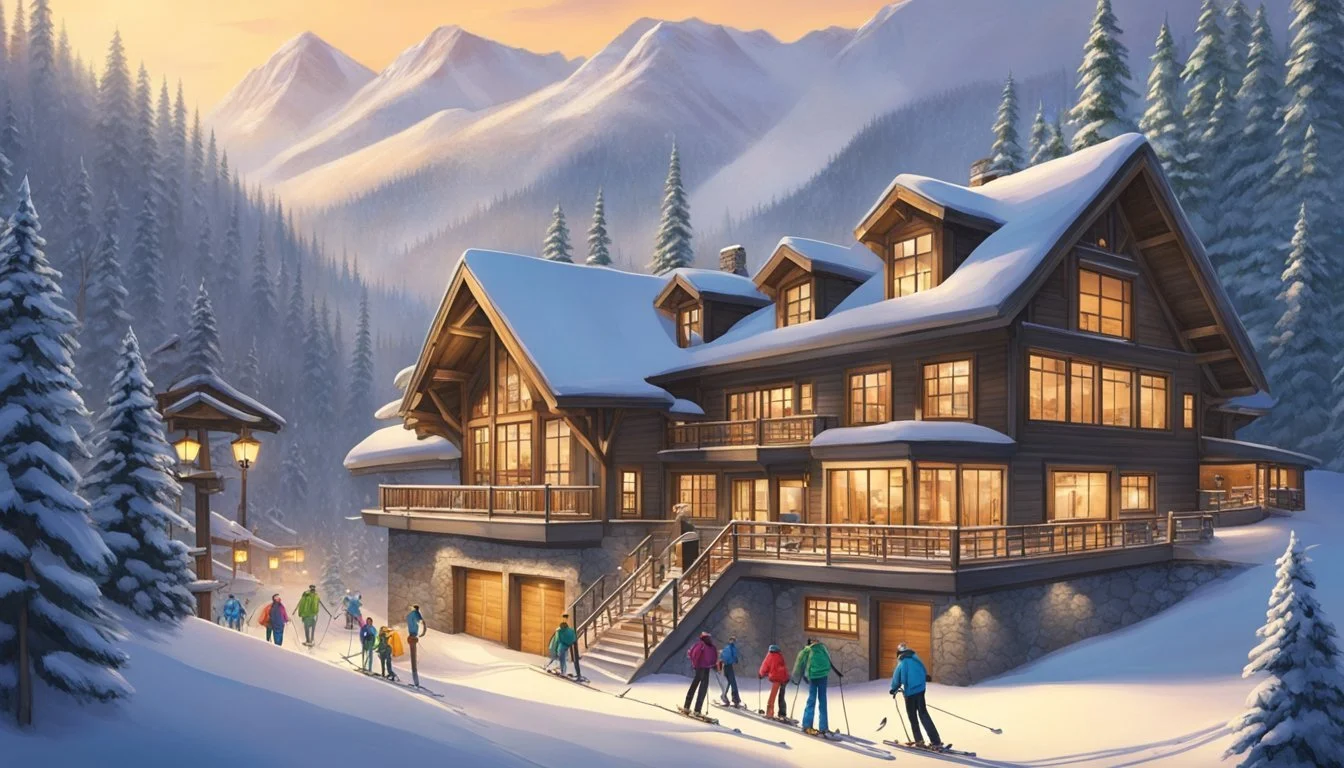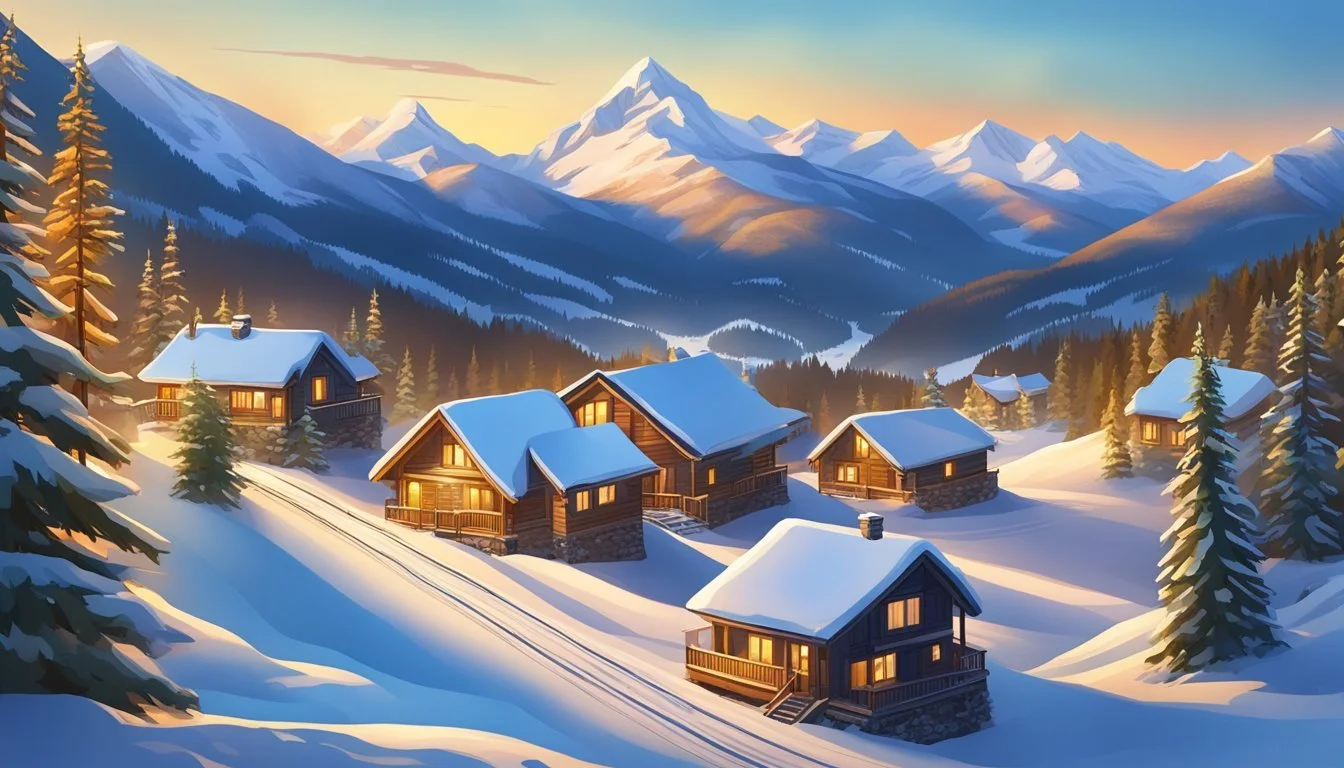Free Land for Ski Enthusiasts
Crafting Your Own Winter Retreat
Imagine the freedom of building your own winter retreat on free land dedicated to ski enthusiasts. Many regions offer government incentives and grants, making it possible to acquire land without any upfront cost. This opportunity allows individuals to create a personal haven amidst breathtaking snowy landscapes, perfectly suited for those who cherish winter sports and serene mountain environments.
For those thinking about breaking away from crowded resorts and expensive lodging, the prospect of owning a slice of paradise is incredibly appealing. Picture a cozy cabin in Claysburg, PA, one of America's most affordable ski towns, where the median list price for a home is just $54,700. The concept of constructing your sanctuary on free land elevates this dream further, reducing initial financial burdens significantly.
The advantages extend beyond the monetary aspect. Custom-built retreats can integrate sustainable design principles, adapting to the natural environment and providing an eco-friendly dwelling. Whether perched in the remote beauty of Alaska or amidst the accessible charm of Pennsylvania, a winter retreat built on free land offers an unmatched blend of adventure, comfort, and financial prudence.
Discovering Free Land Opportunities
Finding free land can be an enticing challenge for ski enthusiasts eager to build their winter retreats. This section covers key methods to identify suitable locations, strategies for searching, and the benefits and drawbacks of available land offers.
Evaluating Locations
When seeking free land, it's crucial to identify regions that offer both prime skiing conditions and viable living arrangements. Areas in Maine, New York, and Michigan are popular among those seeking both rural charm and accessibility to ski resorts. For instance, Maine is known for its rustic beauty and excellent snow conditions, making it an appealing option.
Other than climate and skiing conditions, factors such as proximity to populous areas, local infrastructure, and community amenities can significantly influence your choice. Access to healthcare, schools, and shopping are essential, especially in more remote locations.
Search Strategies for Free Land
The search for free land opportunities requires a systematic approach. Start by consulting local government websites and community boards, which often list available properties. Participating in forums and networking with fellow ski enthusiasts can also provide valuable leads.
Historical acts like the Homestead Act once offered land for cultivation, and although such programs are mostly discontinued, some modern-day equivalents exist. Certain towns seeking to boost population might offer land incentives. Montana and parts of the Rocky Mountains occasionally have special land grant programs designed to attract new residents.
Pros and Cons of Land Offers
Pros:
Cost Savings: Acquiring land without the initial purchase cost can significantly reduce overall expenses, allowing more budget for building and amenities.
Scenic Environments: Free land often exists in less populated, picturesque areas, providing natural beauty and tranquility.
Cons:
Limited Choices: Free land offers may be in remote locations far from essential services and conveniences.
Development Requirements: Often, there are strings attached, such as commitments to build within a specific time frame or invest in community projects.
Evaluating these factors thoroughly ensures that the land chosen aligns with the ski enthusiast's dreams and practical needs.
Assessing a Winter Wonderland
Evaluating a location for a ski retreat involves examining the terrain's suitability for skiing and understanding the annual snowfall and weather patterns to ensure consistent and enjoyable winter conditions.
Terrain and Ski Area
When assessing terrain and ski areas, diverse slopes and varied difficulty levels are crucial. Ski resorts like Whistler Ski Resort in Canada, located at the base of the Whistler and Blackcomb Mountains, offer slopes ranging from beginner to expert, supported by expansive wilderness.
A mixed landscape with both open areas and tree-lined runs provides options for different skill levels and preferences. For accessibility, consider the proximity to major transport hubs such as airports; Bentalit Lodge in Skwentna is only 65 miles from Anchorage, Alaska, and can be accessed via air and water, adding convenience and adventure.
Annual Snowfall and Weather Patterns
Consistent, reliable snowfall is vital. Regions with high annual snowfall like the Saslong ski slope in Val Gardena, which hosts the FIS Alpine Ski World Cup, ensure a stable season for skiing. Look for locations that boast not just frequent snow but also maintain good quality powder for skiing.
Stable weather patterns that avoid excessive weather volatility are important. For example, nestled in British Columbia, Whistler benefits from its coastal climate, offering significant snowfalls and relatively moderate winter temperatures, ensuring that skiing conditions remain ideal throughout the season.
Designing the Ski Retreat
When designing a ski retreat, incorporating sustainable architecture and providing comfort and luxury are essential for creating a space that blends seamlessly with its environment while offering a welcoming, high-end experience.
Ideas for Sustainable Architecture
Sustainable architecture in ski retreats involves using eco-friendly building materials and energy-efficient systems. Architect firms like Atelier Kastelic Buffey often integrate open-plan living spaces to maximize natural light and heat.
Solar panels and geothermal heating systems reduce reliance on non-renewable energy sources. Recycled timber and local stone are popular materials, providing both sustainability and a natural aesthetic.
Roof structures should be designed to handle heavy snow loads, ensuring safety and durability. Energy-efficient windows and insulation minimize heat loss, making the retreat warm and cost-effective.
Integrating Comfort and Luxury
Creating a comfortable, luxurious environment includes cozy fireplaces, plush furniture, and spacious layouts. Modern amenities like heated floors and high-end kitchens add convenience.
Jonathan Tuckey Design exemplifies how old lodges can be renovated to combine rustic charm with modern style. Bedrooms should offer stunning views and privacy, akin to small personal retreats. En-suite bathrooms with spa-like features such as soaking tubs enhance relaxation.
Ensuring an inviting atmosphere through thoughtful design and quality materials creates a perfect balance of comfort and luxury.
The Economics of a Ski Retreat
Building a ski retreat involves careful financial planning and decisions about the type of property to invest in. Key factors include costs, potential returns on investment, and long-term financial viability.
Understanding the Financials
Investing in a ski retreat requires a solid grasp of the financial elements involved. Initial costs include land acquisition, construction, permits, and essential infrastructure. Additionally, ongoing expenses such as maintenance, property taxes, and utilities must be accounted for.
Revenue streams may come from vacation rentals, long-term leases, and seasonal passes. The profitability of ski resorts can be influenced by climate change, impacting snowfall and ski season duration. Diversifying income through amenities like restaurants, bars, and ski schools may help stabilize revenue.
Investing in a Condo vs. Single-Family Home
Choosing between a condo and a single-family home depends on personal preferences and financial goals. Condos often come with lower entry costs and shared maintenance responsibilities, making them a popular choice for many investors. They also provide potential revenue from short-term rentals.
Single-family homes might offer more space and privacy, often appealing to families or groups. However, they come with higher maintenance costs and potentially greater financial risk.
When considering investment options, analyze factors like location, proximity to ski lifts, and local real estate trends. Each option has its benefits, but the right choice depends on the investor's goals and financial situation.
Building a Skiing Community
Successful skiing communities require a robust local culture and proactive community engagement. Creating an inclusive environment and hosting events can significantly strengthen community bonds.
Fostering Local Ski Culture
Local ski culture can be nurtured by celebrating heritage, supporting new skiers, and establishing ski clubs. Heritage plays a crucial role. Recognizing the contributions of local pioneers and seasoned ski enthusiasts can foster pride and tradition.
Supporting new skiers ensures the community grows. Programs targeting all age groups, like those offered by the National Brotherhood of Skiers, can help. Ski clubs further provide a social backbone. These clubs can organize lessons, share skiing tips, and plan group activities, reinforcing community ties through shared experiences and goals.
Events and Community Engagement
Regular events are key to community engagement. Ski races, social meet-ups, and annual gatherings can draw diverse groups together. Hosting national meet-up events, like those organized by various skiing associations, can introduce new members and enhance community spirit.
Additionally, resorts can actively engage residents with open discussions, seeking feedback, and collaborating on new projects. This participative approach ensures everyone’s voice is heard, creating a sense of ownership among community members. Engaging events and active participation can transform a mere group of skiers into a tight-knit skiing community.
The Ski Experience
Skiing offers a broad range of experiences, catering to different skill levels, advanced lessons, and the apriné excitement that follows a day on the slopes.
Diverse Slopes for Different Skill Levels
Ski resorts feature a variety of slopes designed for beginners, intermediates, and expert skiers. Resorts such as Deer Valley Ski Resort, with its over 2,000 acres of skiable terrain, allow for a myriad of options.
Beginners can enjoy gentle, wide runs that offer a comfortable learning environment. Intermediate skiers have access to varied terrain that includes more challenging runs, where they can hone their skills. For the advanced skiers, steep, ungroomed trails and off-piste areas provide adrenaline-pumping adventures. Resorts map and mark trails clearly, ensuring that skiers can find slopes that match their skill level.
Advanced Lessons and Ski Schools
Most ski resorts offer comprehensive ski schools and private lessons for those looking to advance their skills. Professional instructors are trained to teach all levels, from complete novices to those perfecting advanced techniques.
These programs often include group classes, individual coaching, and specialized clinics. For example, Sälen in Sweden offers tailored lessons that focus on carving, moguls, and even freestyle skiing. Ski schools also cater to children, making it an ideal family activity. Learning from skilled professionals enhances safety and improves overall skiing abilities.
Advanced lessons often incorporate state-of-the-art equipment, video analysis, and personalized feedback, providing skiers with a tangible improvement in their performance.
The Thrill of Après-Ski
The apriné experience, commonly known as après-ski, is a significant part of ski culture. After spending the day on the slopes, skiers look forward to unwinding and socializing. Luxury ski resorts often feature a range of apriné activities, from lively bars and gourmet restaurants to relaxing spa treatments.
In destinations like Verbier and Sälen, après-ski venues are renowned for their vibrant atmospheres. Guests can enjoy hot mulled wine, live music, and cozy fireplaces. This social aspect allows skiers to share their day's adventures, making apriné an integral part of the skiing experience. The blend of exciting skiing and enjoyable apriné activities leaves memorable and enriching experiences for everyone involved.
Activities Beyond the Slopes
Exploring the winter landscape offers numerous activities beyond skiing that can delight any visitor. From engaging in snowshoeing adventures to discovering year-round outdoor opportunities, there is much to enjoy.
Venturing into Snowshoeing and Other Winter Activities
Snowshoeing stands out as an excellent option for those seeking to immerse themselves in Colorado's stunning winter scenery while staying active. It requires minimal equipment—primarily snowshoes and trekking poles—making it accessible.
Snowshoeing trails range from beginner to advanced, ensuring that everyone can participate regardless of skill level. In addition to snowshoeing, cross-country skiing provides another avenue for winter exploration. This activity is both a full-body workout and an opportunity to traverse picturesque landscapes. For those looking for a more relaxed winter pastime, many ski resorts offer guided snowshoe tours that include historical insights and nature talks. Engaging in these activities allows visitors to experience the magic of winter without the need for skis.
Year-Round Outdoor Opportunities
Beyond the winter months, the beauty of these regions continues to shine with year-round outdoor activities. The transition from winter to spring brings opportunities for hiking, biking, and exploring scenic trails that earlier were best navigated with snowshoes.
Hot springs are a popular destination, offering relaxation with the added allure of Colorado's natural landscapes. Additionally, mountain resorts often offer activities such as zip-lining, horseback riding, and mountain biking, ensuring that visitors can find enjoyment in every season. Adventure parks and alpine coasters provide thrill-seekers with unique experiences all year. This diversity ensures that while the ski season may come to an end, the array of activities available doesn't.
Capturing Scenic Vistas
When constructing a winter retreat, strategic planning for stunning views can enhance the living experience. Prioritize design elements that maximize the natural beauty of the surroundings and create luxurious, panoramic vistas.
Optimizing for Mountain Views and Natural Expanses
Selecting the right location is essential. Consider elevation: Higher ground often provides unobstructed views of the surrounding peaks and valleys. Orientation matters: Face main living spaces toward the most scenic directions, such as snow-covered peaks or expansive valleys. Large windows and glass doors should dominate these rooms.
Building materials should blend with the natural environment to avoid obstructing the scenery. Use transparent barriers or railing for decks and patios to maintain visibility. Selective tree trimming can also open up views while preserving the natural landscape's integrity.
Design Tips for Panoramic Luxury
Floor-to-ceiling windows are a must for immersing oneself in the stunning vistas. These windows should be installed in living rooms, dining areas, and bedrooms. Balconies and terraces extending from these rooms can further enhance the visual experience. Utilize corner windows to capture views from multiple angles.
Incorporate outdoor spaces such as wrap-around decks and rooftop terraces. These provide unobstructed views and additional lounging areas. Interior design should focus on minimalism and use earthy tones to complement the natural beauty outside. Furniture placement should not obstruct views; instead, arrange seating to face outward toward the vistas.
Comparative Analysis
The availability of free or low-cost land for ski enthusiasts varies widely across different regions, offering unique benefits and challenges in each. This analysis will focus on key differences between selected domestic retreats and compare the allure of international destinations.
Winter Retreats: Maine vs. New York vs. Michigan
Maine offers rugged landscapes and relatively affordable real estate near popular ski areas like Sugarloaf and Sunday River. The state’s colder climate ensures a long ski season, but accessibility can be challenging due to fewer major airports.
New York provides a mix of accessibility and variety, with well-known resorts in the Adirondacks and Catskills. Properties near places like Lake Placid and Hunter Mountain can be on the pricier side, yet the state’s extensive infrastructure and proximity to major urban centers are major draws.
Michigan stands out for its affordability, particularly in its Upper Peninsula. Destinations such as Marquette Mountain offer less crowded slopes and a smaller price tag for land. However, the region’s remoteness and less predictable snowfall compared to the Northeast can be a drawback for some.
International Appeal: Swiss Alps vs. American Slopes
Switzerland boasts the renowned Swiss Alps, representing the epitome of luxury and high-quality skiing. Resorts like Zermatt and St. Moritz offer breathtaking scenery and world-class amenities, albeit at a significantly higher cost. The country’s meticulous infrastructure and investment in tourism make it a top choice internationally.
American slopes in states like Colorado and Utah are increasingly competing on an international level. Areas such as Aspen, Vail, and Park City offer premier skiing experiences with the added benefit of modernized facilities and a burgeoning après-ski culture. While typically less expensive than the Swiss Alps, these locations still cater to an upscale market, though more budget-friendly options are available closer to modest-sized resorts.

